(Medically reviewed by Dr. Zac Hyde M.D
Are Environmental Plastics Testicle Toxins?
I decided to publish this article on microplastics and testosterone after watching a video on youtube.
The creator of the clip took a microscope to a can of tuna, zoomed in and exposed a startling amount of microplactic inside the fish.
And I thought to myself, well this explains a lot!
Because I’ve been talking about plastics impact on hormonal and gonadal health for more than a decade.
And plenty of other bloggers and content creators have as well, so I know the message is getting out there.
But fertility, testosterone and gonadal health continue to decline at a startling rate.
So even though many of you have drastically reduced your plastic exposure, this stuff is still going after your testicles through the back door.
Because if you’re anything like me…
You’re not in the habit of examining your food through a microscope before you sit down to the dinner table.

FREE Testosterone Ebook!
+ Hormone Boosting Tips Delivered to your Inbox
Learn 3 Unusual Tricks I Used to Spike My Testosterone Levels By More Than 300%.
David Jaynes tackles this subject in detail below.
But before I hand you over to him, I want to talk about some defensive moves all of us need to take to avoid exposure to environmental plastics.
How to Avoid Microplastics
As you’ll see when you read about the studies below, Microplastics suppress testosterone production, reduce semen quality and lower fertility in human males.
To avoid avoid this hormonal chaos, it’s important that you implement the suggestions below.
Stopped Eating Canned Tuna
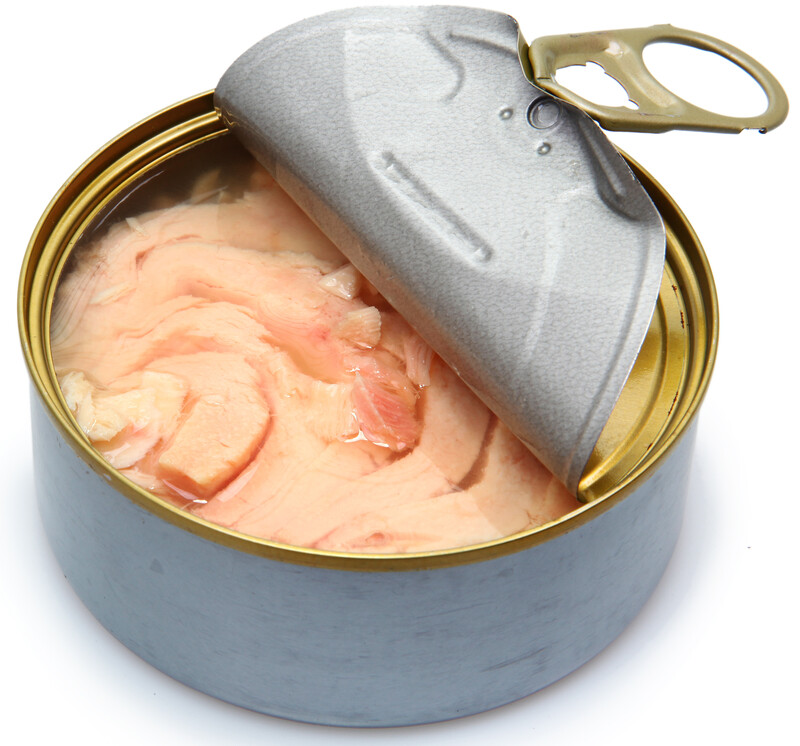
In a recent analysis of South American canned tuna, all 32 samples showed the presence of microplastics.
Both polyethylene and polyethylene-terephthalate were found inside the samples.
I’d also add other forms of seafood to this list, because many contain not only plastic, but also high levels of mercury which is extremely toxic to humans.
Avoid Plastic Water Bottles
A study done in 2018 found that 93% of bottled water samples contained micro-plastic.
Studies have also found that most tap water contains plastic particles as well, so drink filtered water whenever possible.
Stop Using Plastic Food Containers

Switch to glass and metal containers instead.
If you ever must use a plastic container, don’t put it in the microwave to prevent the BPA and phthalates from leeching into the food.
Microwavable TV dinners and other single use plastic bound foods should also be avoided.
Stop Wearing Man Made Fabrics
More than half of all clothing material is now made from polyester, nylon, acrylic, and other synthetic fibers.
When these items are washed, they release tiny fibers onto the fabric which you inhale into your respiratory system.
To avoid this airborne onslaught, switch to manmade fabrics made from cotton, wool, silk and hemp.
I keep things simple myself and always buy 100% cotton because it is breathable which prevents testicular overheating.
Limit Use of To Go Cups
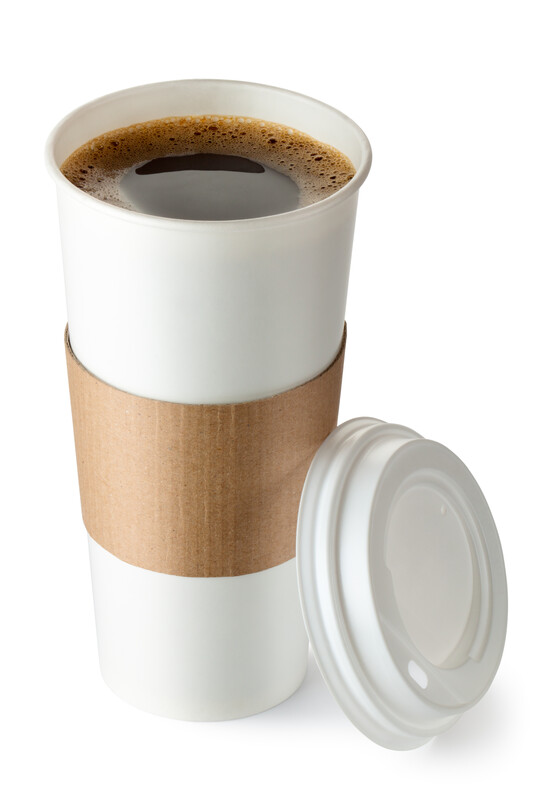
Most to go cups used for hot beverages such as coffee and hot tea are lined with HDPE grade plastics that leech into the liquid.
If you frequently get your caffeine fix on the go, invest in a stainless steel or glass coffee cup to limit your exposure.
Switch to Clean and Green Male Cosmetics
Most conventional cosmetics contain plastic compounds.
To avoid them search for fragrance and phthalates free products.
Also…
If the ingredient list of any product you put on your skin contains a list of words you can’t pronounce, it probably contains testicle toxins.
Safe products use ingredients you would have no problem eating, such as olive oil, coconut oil, shea butter and natural mineral salts.
Eat Clean, Organic Local Foods Whenever Possible

Your local farmers market is your best option for clean, fresh food, especially if its organic.
The industrial food complex, which produces food on a mass scale, which then winds up at your local grocery store shelf should be a distant second option.
You should also develop the habit of eating the vast majority of your meals at home, where you have complete control.
I worked in kitchens in my 20’s and I’ve seen boiling liquids poured into plastic containers many, many times.
I’ve also seen smoking hot food covered in thin plastic Saran Wrap many times as well.
When you cook your food at home, you can avoid this unnecessary exposure.
One final thing before I pass you on to David…
It would be very easy to become obsessed with this, which would be counterproductive.
Why?
Because in the modern society we live in, total avoidance of plastic is absolutely impossible.
But if you avoid plastic containers, chemical heavy cosmetics, manmade fabrics, and start eating clean, organic foods prepared at home you’ll be 90% of the way there.
Now here’s David with more detail on this important subject…
Microplastics and Testosterone Part 2:
Parkesine, the first artificial plastic, was developed in 1856, but it wasn’t until decades later that such materials became standard.
Since then, countless types of plastic have been developed, including polyethylene and polyvinyl.
Today, plastic is everywhere. It makes up the packaging for our food, the containers for our meals, the bottles for our water, and more.
We’ve grown so used to it that we no longer pay attention to it.
Unfortunately, whether we pay attention to it or not, plastic can impact our health in many ways, and we cannot afford to turn a blind eye.
Read on to learn about the harmful impact of such materials and what you can do to protect yourself.
Microplastics Reduce Testosterone Levels
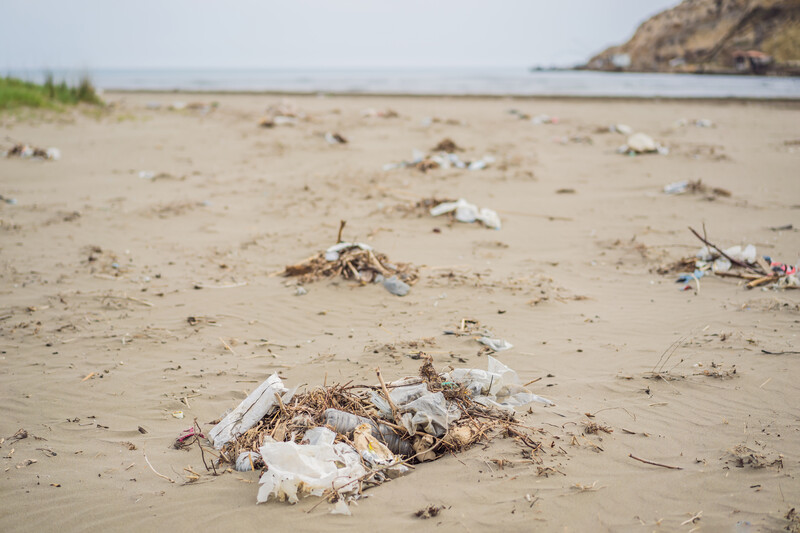
Numerous factors impact male fertility and testosterone levels. One such appears to be exposure to microplastics.
In one recent study, mice were given drinking water containing 100 μg/L and 1000 μg/L microplastic elements daily for six months.
Researchers noted changes in testicular morphology (structure) and a reduction in testosterone, luteinizing hormone (LH), and follicle-stimulating hormone (FSH) levels.
In addition, researchers looked at the interaction between the same plastic elements and Leydig cells (the primary source of testosterone in males) in vitro.
The experiment showed that microplastic elements enter the Leydig cells, resulting in reduced testosterone production.
The first objection you may have is that this is a rodent study, so we shouldn’t take the results too seriously. While that is one way to think about it, consider two counter-points:
- These mice were exposed to similar levels of microplastic elements to those the average person encounters in everyday life.
- Other studies have similar findings, and not all of them are carried out on rodents.
Microplastics Reduce Sperm Quality and Fertility
In addition to impacting testosterone levels, consistent exposure to microplastic elements can affect sperm quality.
The same study we looked at in the previous point reported that persistent exposure to such elements resulted in reduced sperm quality and a higher likelihood of abnormalities.
Another recent study had similar findings.
In it, researchers noted that exposure to polystyrene microplastics adversely affects hormonal health and fertility in mice.
In the experiment, mice were exposed to saline or microplastics for 30 or 44 days.
Once the exposure periods were over, some of the mice had fertility tests done, and others went through tests that looked at microplastic accumulation.
The researchers noted that microplastics accumulate in the ovaries and in the testicles and result in significant oxidative stress.
These findings suggest that exposure to such synthetic elements has a significant impact on fertility and reproductive health.
Microplastics are Estrogen Mimic’s
According to some reports, microplastics are a source of xenoestrogens, which mimic estrogen and can have disastrous effects on our health.
Sources further suggest that these threats should not be taken lightly because they could largely be responsible for people’s inability to have children now and in the future.
Some sources claim that men are at risk of infertility and that, by 2045, many males might no longer be able to reproduce due to the harmful effects of chemical exposure.
In another recent study, researchers examined the interaction between microplastic exposure and reproductive health in men and women.
The authors of the paper note that exposure to such elements have had harmful effects on the reproductive health of mammals and aquatic animals.
In addition to affecting fertility, these chemicals can adversely impact the development of embryos.
As far as human health and fertility go, the evidence is slowly but surely coming in..
Experts now hypothesize that microplastic exposure can affect people’s health by promoting inflammation, oxidative stress, apoptosis, changes in hormone levels, and more.
Microplastics Damage Testicular Tissue
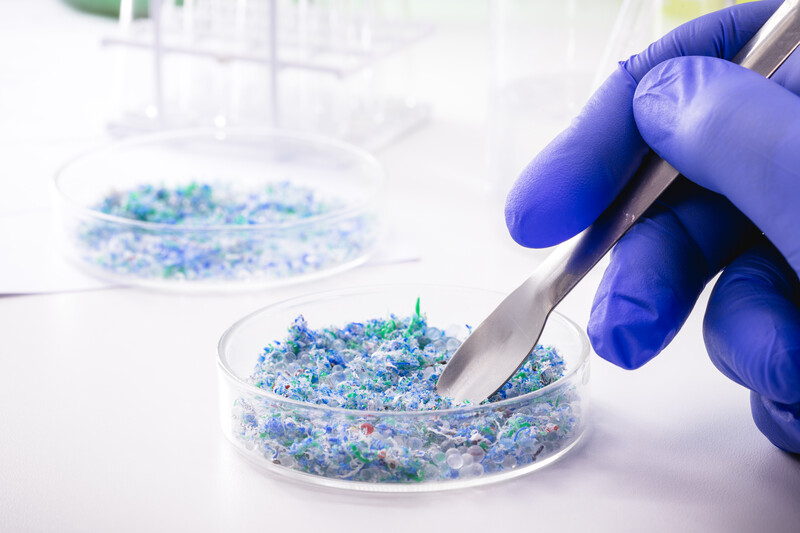
The testicles serve numerous crucial functions in the body. Most notably, they are responsible for making sperm and the essential hormone testosterone.
An impaired function can affect sperm quality and reduce testosterone levels, leading to a cascade of adverse health effects.
The question is, do microplastics affect testicular function and structure?
In one recent paper, researchers examined the effects of polyethylene microplastic exposure on the testicular function of adult rats. Researchers experimented on 48 rats by exposing them to the following:
- 1.5 mg per kg
- 1.5 mg per kg + 50 mg per kg lutein (a potent antioxidant)
- 50 mg per kg lutein
There was also a control group for comparison.
Hormones, sperm quality, biochemistry, and other parameters were studied in all rats after 56 days of experimentation.
According to their findings, microplastic exposure led to the following:
- Reduced catalase, superoxide dismutase, glutathione peroxidase, and glutathione reductase activities
- An increase in reactive oxygen species (ROS), malondialdehyde, and oxidative stress
- Impaired sperm motility and viability, as well as reduced sperm count
- A higher risk of sperm abnormalities
- A drop in luteinizing hormone and testosterone levels
- Histopathological damage to the testicles
The good news is that lutein treatment reversed all of these adverse effects, which could mean the antioxidant and similar ones can be used to mitigate damage caused by plastic exposure.
Microplastics, Testosterone and Sperm Degeneration
In a recent systematic review, researchers examined the effects of microplastics and nanoplastics on the reproductive health of mammals.
The authors examined 12 papers and reviewed the immunological, morphofunctional, and oxidative outcomes.
One of the findings from the examined papers is that plastic particles can accumulate in the gonads, leading to a range of adverse effects:
- Seminiferous tubules degeneration (the site of sperm production)
- Sertoli cell death (cells crucial for sperm production)
- Sperm degeneration
- Ovarian cysts
- Oxidative stress and inflammation
- Impaired progesterone, estrogen, and testosterone levels
According to the paper’s authors, plastic particles can induce dose-dependent damage to the gonads, leading to structural and functional changes.
Current findings are worrisome, to say the least.
An ever-growing body of research paints a grim picture that illustrates how devastating microplastic exposure can be on reproductive health.
To make matters worse, the effects of the chemicals found in plastics aren’t isolated in the testicles and ovaries.
Microplastics and Testosterone (Studies On Human Health)
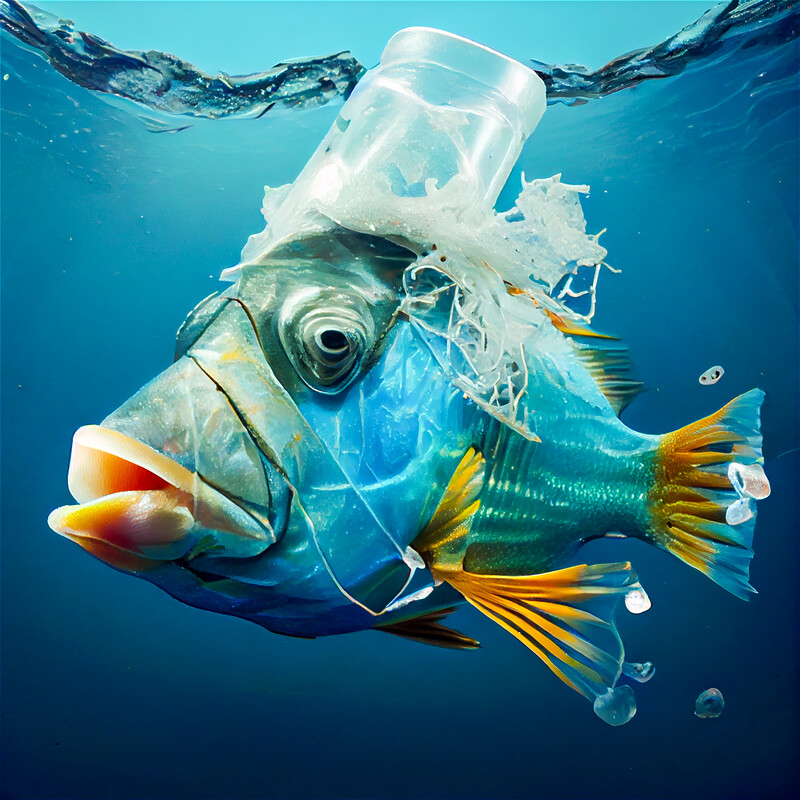
In one analysis from 2019, researchers examined the average annual microplastic consumption ranges with a particular focus on the American diet.
The authors explored 26 studies and took into account the microplastic inhalation risk, as well as the source of drinking water and its potential impact.
According to their findings from evaluating roughly 15 percent of Americans’ calorie intake, the authors concluded that annual consumption ranges from 39000 to 52000 particles.
These estimates skyrocket to between 74,000 and 121,000 when accounting for inhalation, and bottled water consumption can add an extra 90,000 particles annually.
The researchers believe these values are underestimates.
But aside from potentially affecting reproductive health, what other harmful effects can we expect?
A review from 2020 attempts to answer that question.
According to their findings, humans are at risk of consuming microplastics in several ways, including by eating contaminated food.
Many foods, such as fruits and veggies that grow on contaminated soil and fish, can be sources of such harmful elements.
As far as the impact on human health goes, such elements can affect the central nervous system, kidneys, respiratory system, skin, and digestive system.
More Tips to Avoid Microplastics
Microplastics are here to stay, and it appears that our exposure to harmful chemicals is only going to increase in the future.
So, it’s up to us to be mindful of the potential threats and find ways to reduce our exposure.
The good news is that reducing your contact with these materials isn’t that challenging.
First, you should replace all the plastic water bottles you use with metal flasks and glass bottles. Doing so is particularly important if you’re into the good habit of drinking plenty of water.
Second, swap plastic food containers with BPA-free alternatives, such as glass and metal containers. If you must use plastic Tupperware, follow these tips:
- Don’t microwave your food in these containers
- Don’t leave these containers under direct sunlight or in your car during warm days
- Don’t use abrasive cleaners because these can cause small particles to detach and enter your body
Third, swap all your plastic kitchen cookware with wood and metal alternatives.
Doing so can be particularly beneficial because these items often heat up while cooking, and your food can absorb plastic elements that would then get inside your body.
The next beneficial thing you can do is reduce your seafood and shellfish consumption.
A lot of plastic thrown in the sea gets ingested by sea creatures, increasing your risk of exposure to harmful elements.
Microplastics and Testosterone Conclusion
Microplastics are everywhere. We’ve grown quite used to seeing them around, which is why many people don’t consider them a threat.
Unfortunately, even if you pay attention to your lifestyle and strive to maintain healthy habits, microplastics that make their way inside your body can cause harm and possibly increase the risk of long-term issues.
So, the first step is to realize the potential risk. The second step is to limit your exposure to such harmful elements as much as possible.

